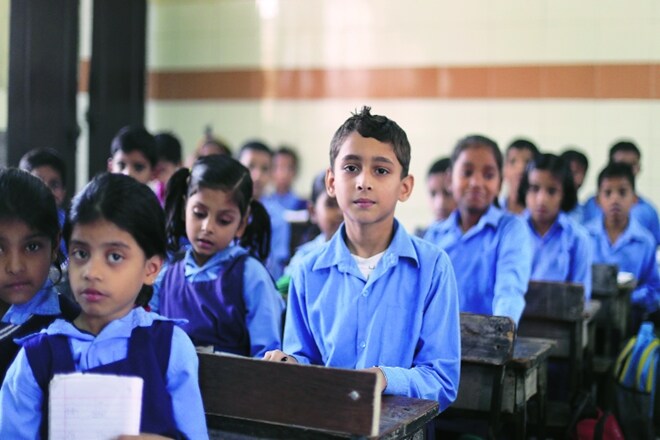The Union government’s performance-based incentives to states for progress on school education, under the Samagra Shiksha Abhiyan, should spur states to work on critical areas like rationalising teacher deployment and improving learning outcomes. From the current financial year onwards, states may use the funds allocated to them by the Centre for the Samagra Shiksha Abhiyan—that subsumes the Sarva Shiksha Abhiyan, the Rashtriya Madhyamik Shiksha Abhiyan and the teachers’ training schemes—in any manner they see fit.
But, those that move on certain goals identified by the Union HRD ministry will be rewarded with additional funds from the Samagra pool. While the overall allocation budgeted for FY19 is Rs 34,000 crore, the allocation to states will be Rs 29,400—5% above the FY18 allocation of Rs 28,000 crore. The Union HRD ministry, as per a report in Deccan Herald, has decided to reserve 30% of the remaining Rs 4,600 crore for improvement in learning outcomes, 10% for creation of a separate cadre of headmasters, 10% rationalisation of teacher deployment with mandatory minimum rural tenure, 10% for improving teacher-pupil ratio and 7.5% for improving gender parity index.
The pain-points in schools education are all well-known. Learning gaps in government schools, highlighted by the ASER exercise over the years, are leading to elevated dropout levels and, ultimately, to unrealised or sub-par realisation of human resource potential for the economy. Also, while the country has a 1:27 teacher-pupil ratio—against the RTE Act goal of 1:30—there are also reports of 30-40% vacancy, mostly in rural areas.
This has happened because of a hyper-concentration of teachers in schools in urban areas while some village schools go virtually teacher-less. States must make a minimum tenure of rural service mandatory, else the urban-rural learning gap, against backdrop of overall deficit, is likely to worsen. Financial incentives, of the kind that the Centre envisages, could perhaps facilitate this.


